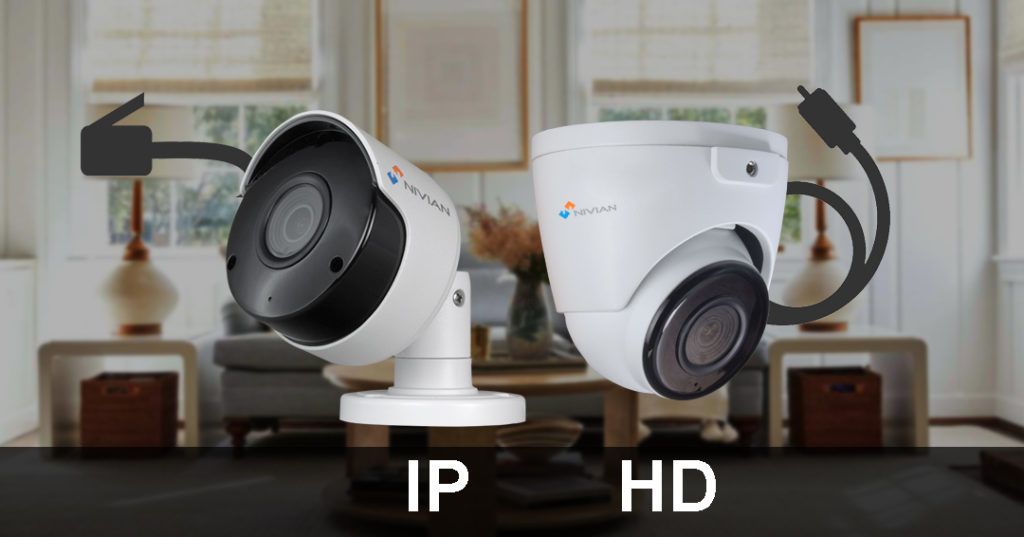HDCVI VS IP? It is one of the most frequent questions that appear when you want to transmit a signal. There are two types of signals: analog (via coaxial key) or HD and IP signals (via UTP or WiFi key). Within analog or HD signals, we find different technologies: HDCVI, HDTVI or AHD.
🔷 HDCVI VS IP
When we compare HDCVI vs. IP, we see that HDCVI technology has many advantages.
↪ First of all, WHAT IS HDCVI?: HDCVI is a technology that allows point-to-point video transmission via coaxial cable. This technology achieves lossless signal and no delay video transmission between HDCVI camera and HDCVI DVR unit. Also, HDCVI can jointly transmit audio and control signals, up to a distance of 500 meters.
Second, the IP camera uses a data transmission technology through a network switch, Router, with the risk of data loss. In addition, IP cameras use the video buffer technology, which causes the effect video latency.
On the other hand, IP surveillance installations use IP communication networks to transmit all information and video. That is, an IP camera is a camera that broadcasts the images captured by it via data network or internet, also allowing the sending of emails or alarms by motion detection among many other functions. An advantage of this technology is that it does not need to connect the camera physically with the recorder, it will be enough to be on the same network to be able to communicate with each other.
🟦 COMPARISON HDCVI VS IP CAMERAS
- HDCVI uses the standard analog video transmission medium. For an IP camera, an Ethernet cable (CAT5, Cat6) is required for its data transmission, which means that the installation of an existing analog system will not be compatible for the installation of a system with NVR and IP cameras.
- HDCVI technology supports point-to-point transmission, without any video delay, high-definition video streaming is transmitted from the camera to the DVR without video compression, and the images keep their original format.
- A current standard surveillance system installed can be easily upgraded with HD-CVI products by replacing the cameras and DVR.
- IP systems require setting parameters for each of the IP cameras. Patents (intellectual property), use licenses, compatibility problems, limit the flexibility of selecting IP equipment and therefore the installation. Even having IP cameras with ONVIF standard, the user may still encounter compatibility problems.
- HDCVI allow a simpler installation as well as fewer LAG problems, since the data network or transmission distance above 500 meters is not overloaded. On the other hand, an IP installation means avoiding the installation of cables as it does not require a physical connection to the recorder.
🔷 HDTVI VS HDCVI
HDTVI It is an open technology, so that any manufacturer can develop HDTVI products, without the need to pay royalties or buy a product.
↪ There are several similarities between HDCVI Y HDTVI:
🔹 HD video transmission over coaxial cable, 720p (1280×720) and 1080p (1920×1080).
🔹 Audio and telemetry transmission through the same coaxial cable.
🔹 Wiring distances of up to 500 meters, without signal loss.
🔹 The possibility of carrying out a partial migration of an existing installation, maintaining a part of analog cameras, and replacing the most important ones with HD cameras.
🔹Video streaming without delay.
🔹 The installation methodology is the same as with an analog system. It is not necessary to acquire new knowledge to carry out HDCVI or HDTVI installations, as it may be to carry out IP installations.
▶ Now that you know the main differences / similarities between HDCVI, HDTVI or AHD, we hope that the doubts about the comparison HDVCI vs IP Y HDCVI vs. HDTVI, have been resolved. Still, don't hesitate to contact us!
